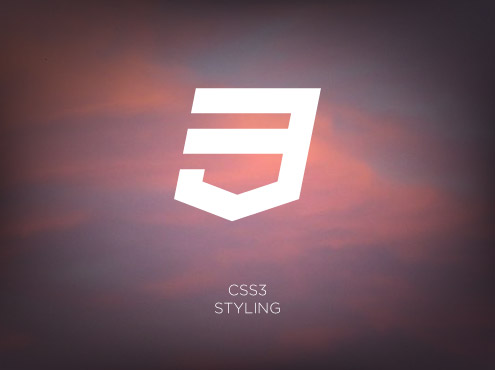-
201117 May
Posting on behalf of Tab Atkins about an open spec issue:
I’ve been pretty adamant for some time that gradients should use the math-y interpretation of angles, where 0deg is East and 90deg is North. In addition to matching what you learn in school about polar coordinates, it matches what tools like Photoshop expose. Other members of the WG, though, have been equally adamant that we should more closely match existing language conventions, particularly that bigger angles mean clockwise rotation.
The strength of my conviction has eroded over time. It really is true that every other use of angles uses them to represent clockwise rotations. In SVG, angles are present in transforms and the
glyph-orientationproperties, while in CSS they’re present in transforms,image-orientation, and theazimuthandelevationaural properties. In all of them (saveelevation, which rotates in a different axis), the rotation is clockwise.
-
201109 May
Posted in CSS3 Previews
CSS3 allows web designers to specify multiple background images for box elements, using nothing more than a simple comma-separated list.
Browser support for multiple backgrounds is now relatively widespread with Mozilla Firefox (3.6+), Safari/Chrome (1.0/1.3+), Opera (10.5+) and even Internet Explorer (9.0+) all implementing the feature.
-
201119 Apr
The W3C CSS Working Group have introduced a new module to CSS3, the CSS3 Grid Layout module, as well as released two further updated specifications, for the CSS3 Multi-column Layout and CSS3 Text modules.
Let’s take a closer look at what’s new.
-
201113 Apr
With Internet Explorer 9 barely out of the labs, Microsoft yesterday caught many developers by surprise, with the launch of the first platform preview of the latest incarnation of their popular web browser, Internet Explorer 10, at this years Mix conference.
The latest version of Internet Explorer, currently only three weeks into the development cycle, already boasts an impressive array of improvements, particularly in terms of CSS3 support, addressing many of the areas missed by IE9. For this release, Microsoft has paid particular attention to the CSS3 layout modules, with the platform preview offering implementations of the CSS3 Multi-column Layout module, the Flexible Box Layout module, and the recently announced CSS3 Grid Layout module.
-
201104 Apr
The W3C CSS Working Group have released two further updated working draft specifications for CSS3.
The first, released on 11 March, sees a major overhaul of the CSS3 Flexible Box Layout module. The second, released on 24 March, brings several enhancements to the CSS3 Fonts module.
-
201118 Mar
Opera have once again kicked their level of CSS3 support up a notch with the release of the latest beta version of their popular web browser. Opera version 11.10 beta, code named ‘Barracuda’, was first unveiled at this weeks SXSW in Austin, Texas, before being made available for download as a public beta yesterday.
The most notable improvements to the browser, in terms of CSS3, are support for CSS3 multi-column layout and partial support for CSS3 gradients.
-
201115 Mar
Posted in CSS3 Resources, News, Tutorials
Update: this offer is now available for the foreseeable future
Think Vitamin are offering free access to their entire CSS3 Video Training Course for 24 hours, until Wednesday March 16th at 11:59pm.
The series, totalling 51 videos, covers CSS3 basics such as border-radius, box-shadow and CSS3 gradients, as well as more complex subjects including CSS3 selectors, transitions, animations and transforms.
-
201128 Feb
Over the course of the last two weeks, the W3C CSS Working Group have issued three updated CSS3 specifications. The first sees the CSS3 Backgrounds and Borders module return to candidate recommendation, with the second and third providing updated working drafts of the CSS3 Text and CSS3 Image Values and Replaced Content modules respectively.
The working group also introduced a new module, CSS3 Writing Modes, just over 2 weeks ago on the 1st February. This recent flurry of activity represents the first major updates to the CSS3 specifications since the CSS3 Color module was released as a proposed recommendation in October last year.
Let’s take a look at what’s new.
-
201131 Jan

The new CSS3 icon, part of the HTML5 brand (image courtesy of W3C).
On the 18th January the W3C unveiled a logo and brand identity for HTML5 and associated technologies.
The HTML5 logo and accompanying icons (shown below), including one for CSS3 (larger version above), are, according to the W3C at the time of launch, intended to be “an all-purpose banner for HTML5, CSS, SVG, WOFF, and other technologies that constitute an open web platform. The logo does not have a specific meaning; it is not meant to imply conformance or validity, for example. The logo represents ‘the Web platform’ in a very general sense.”
-
201017 Nov
Posted in Book Reviews, CSS3 Resources, News

CSS3 for Web Designers, released yesterday, is the second instalment in A Book Apart’s For Web Designers series of mini books for, unsurprisingly, web designers.
The book, available both as an ebook (now) and a paperback (from 22nd Nov), aims to show designers those aspects of CSS3 which can be comfortably used today, along with workarounds for older browsers which don’t support CSS3 (e.g. Internet Explorer 6.0 through 8.0).




